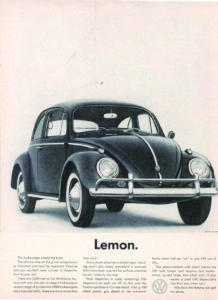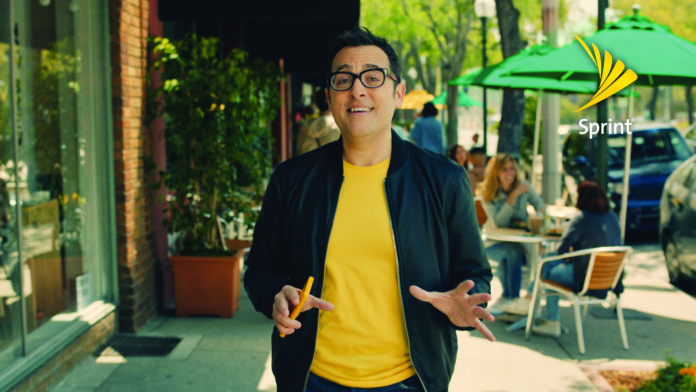By Ralph Fascitelli
Everyone in marketing and advertising quickly learns that the Number One barrier to success isn’t necessarily competition but category noise.
Our primary challenge is to first break through all the clutter and to simply have our product seen and remembered.
It’s a challenge made more difficult as peoples’ lives become more hectic and more and more products pop up. At P&G, we were taught early-on that awareness and credence was a necessary precedent to trial and purchase.
My favorite ad these days is the one from Sprint, where the narrator makes the startling confession that Sprint’s phone quality is not any better than the competition’s. He goes on to say that the quality of service of all major brands is pretty much the same.
It’s a refreshing dose of realism that stands apart from the daily dribble of product overpromise and an underutilized “underpromise” approach that I believe is more likely to break through and induce prospects to hear the rest of the story.
If ‘underpromise’ is such a compelling advertising strategy, why isn’t it deployed more frequently?
 Everyone in advertising remembers the classic VW “Think Small” campaign, created by Bill Bernbach. It broke all the rules in an era of alpha, machismo auto-industry muscle advertising. It was the left hook when a right cross was the predictable norm. And though it meant different things to different audiences, the sheer audacity of the understatement itself was captivating.
Everyone in advertising remembers the classic VW “Think Small” campaign, created by Bill Bernbach. It broke all the rules in an era of alpha, machismo auto-industry muscle advertising. It was the left hook when a right cross was the predictable norm. And though it meant different things to different audiences, the sheer audacity of the understatement itself was captivating.
The self-deprecating aspect of the “Think Small” campaign and the subsequent “lemon” print ad was so different and refreshing that it got everyone’s attention. The iconic VW campaign induced prospects to look closer, which, of course, is so very hard to achieve.
Several decades ago, I had a small tech client in Wyoming, of all places, who was trying hard to convince Mac users that it made the best hard drive on the market. The company had been around for three years and had never done more than $100K a month.
We quickly developed a full-page ad with a side-by-side comparison of their hard drive to the best hard drives in the category, with the underpromise headline: “Users Won’t Be Able to Tell the Difference… But Buyers Will.” In little more than a year, sales increased to well over $100K per day and the company became one of the most successful third-party Macintosh add-ons.
An underpromising ad strategy works best in a crowded and relatively mature category. While we’re typically taught to find the ultimate, unique selling proposition (USP) for our brands, the truth is there are usually only two or three meaningful niches in most categories.
I believe that, over time, customers become somewhat immune to the latest and greatest product claim and tune out hyperbolic, our product is great, advertising… that’s why a contrarian, “underpromise” ad approach is worth considering.
For most product categories, what consumers want most is value, which is best defined as “Quality Divided By Price.” An underpromise ad is, at its core, a value ad that makes the case that our quality is excellent (but not necessarily superior), but our price makes for an outstanding value. Equal Q, but lower P, resulting in a higher V. It’s a rational proposition that breaks through because it’s different and that resonates because of its reasonableness.
If “underpromise” is such a compelling marketing and advertising strategy, then why isn’t it deployed more frequently? In my experience, the fault typically lies in both client myopia and agency timidity. CEOs and CMOs obsess 24/7 about their product and are hesitant about stepping back from a product-first approach. It also takes a gutsy agency exec to make the case that customers view all products in the category to be roughly equivalent, ala the Sprint campaign.
But this is where solid customer research is useful and where careers are forged. In the end, what really matters is what best builds customer interest in the product. And, ironically, what could work best is an approach that doesn’t put product superiority front and center.
 Ralph Fascitelli is a 40-year branding and marketing veteran whose career includes brand management at the largest advertiser, P&G, and the sale of his own successful tech advertising and PR firm to WPP, the world’s largest advertising group. Today, he still advises a handful of clients about messaging, communications and public relations. You can reach him at ralphfascitelli@gmail.com.
Ralph Fascitelli is a 40-year branding and marketing veteran whose career includes brand management at the largest advertiser, P&G, and the sale of his own successful tech advertising and PR firm to WPP, the world’s largest advertising group. Today, he still advises a handful of clients about messaging, communications and public relations. You can reach him at ralphfascitelli@gmail.com.






